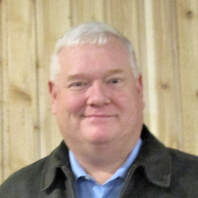By Anne Scheck
Trammart News Service, Oct. 17, 2023
The Independence structure known officially as Station 203 on the corner of Second and Monmouth streets – sometimes called “Stonehenge” by locals due to its incomplete appearance – has been listed for sale by Salem-based Tradition Real Estate Partners.
Nearly two decades have passed since the building’s inception, when concrete footings were first poured for a planned commercial-residential complex. The “as-is” listing, at a price of about $2.9 million, indicates an appraised value of $9.64 million from an evaluation conducted last October.
"We are currently assisting in putting together a development agreement with a national firm for completion,” said Aaron Young, who co-owns the property with his wife, Amy. “To help aid in those negotiations, a decision was made to market the property publicly to help determine a baseline value," he added. Three years ago, the Youngs unveiled plans to transform the multi-level building into a mixed-use development of offices and condominiums.
A mock-up, which portrays the project as it’s envisioned, remains attached to the fencing around the site. Some residents have continued to refer to the cement-and-metal structure as “Stonehenge.” The original 57,000-foot plans included state-of-the-art environmental technology, including sustainable features such as solar power and water recycling. The property has now changed hands several times, with the Youngs as the most recent owners. “We hope to have an announcement coming in the next several months,” Young
Local burglaries prompt concern by merchants over brazen crimes
By Anne Scheck
Trammart News Service, Oct. 20, 2023
Are the same kind of brazen burglaries that are driving stores from major Oregon cities beginning to impact retail businesses in Independence? That's one interpretation of several incidents over the past few months that occurred along the city's Main Street. Recently, smash-and-grab crimes occurred at two locations.
Burglars broke into two locked establishments, Glass Roots and A1 Market, after hours and confidently packed up merchandise. Though unrelated to an Umpqua Bank robber this past summer, in the 300 block of Main Street, some merchants see the robbery there as the seeming signal of the start of a new kind of criminal conduct, in which the fear of getting caught isn’t apparent. In one recently recounted shoplifting incident, stock was removed from shelves and the visitor simply exited. Eyewitnesses to these events said the way they’re being committed -- described as being undertaken almost casually -- is worrisome. For example, the bank-robbery suspect, who left with an undisclosed amount of money, was observed “loping” away from the scene by a worker in the area, according to an interview at the time.
In the two recent break-ins, the owner of A1 Market, Mohinder Kumar, watched a pair of robbers calmly check for passing traffic on security-camera footage, then methodically pound the door with a hammer. Koryn Lambert, the owner of Glass Roots, which was hit a few blocks away, was reported as saying the two men entered her store with the same technique and were “literally staring" into the camera when she viewed the video.
Attempts to collect further information on these from the Independence Police Department, including police reports, was denied by the IPD, which cited Oregon statute that states public records are “conditionally exempt” from disclosure during ongoing investigations. ▪


 RSS Feed
RSS Feed